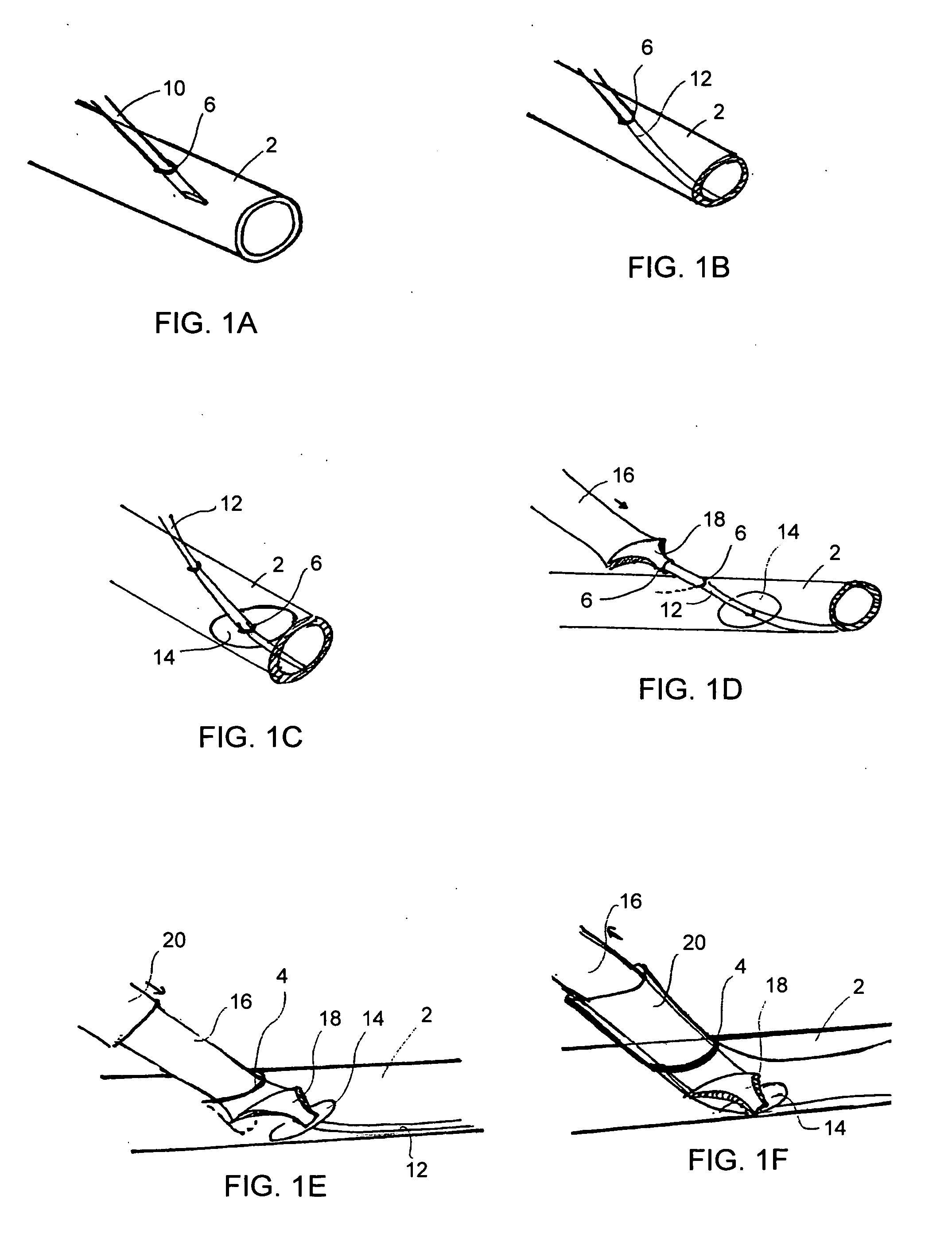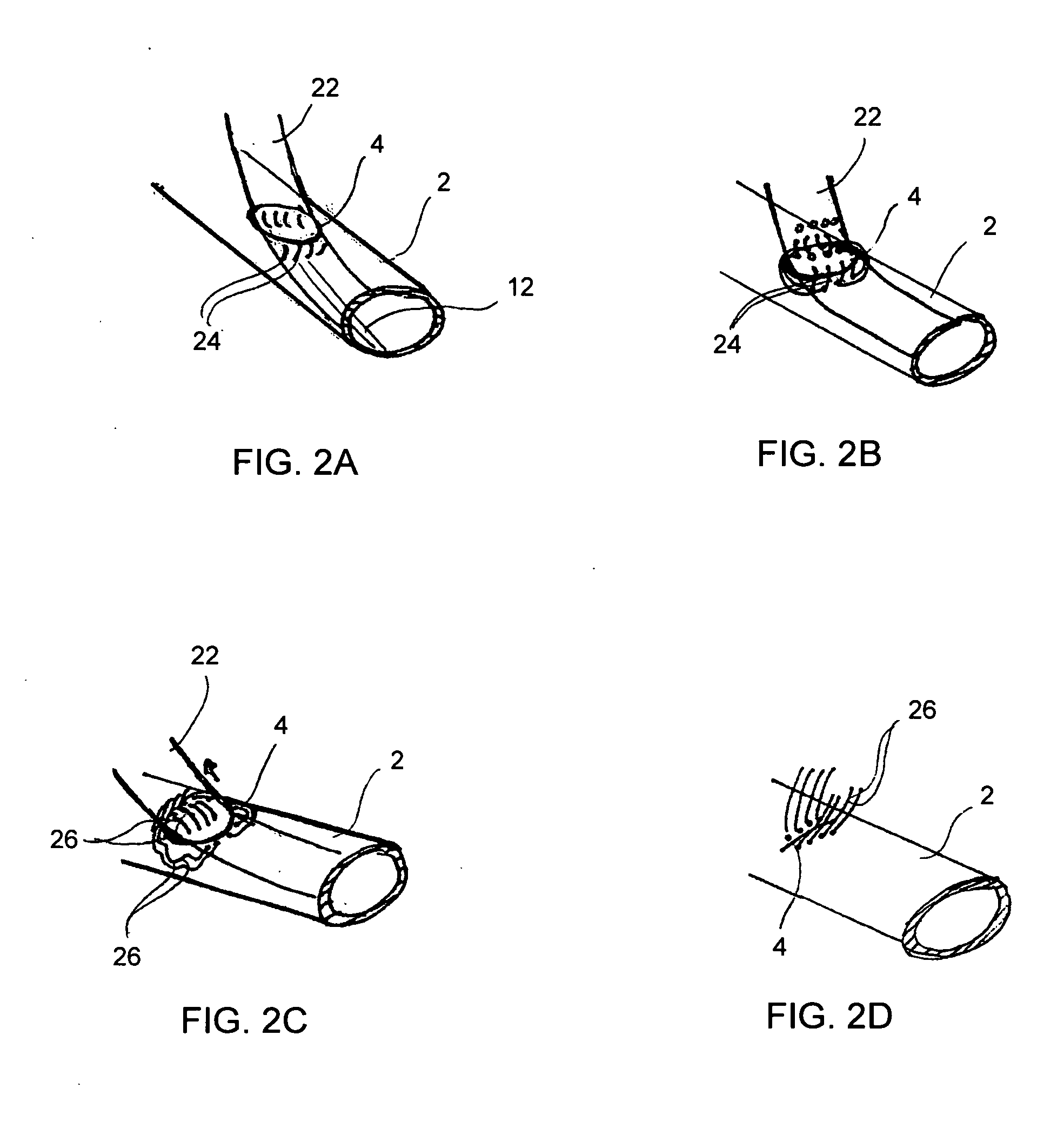Devices and methods for the controlled formation and closure of vascular openings
a technology of vascular openings and controlled formation, applied in the field of percutaneous formation and closure of vascular openings, can solve the problems of large dilators that can significantly traumatize the skin and the vessel tissue, injury and delamination of tissue layers in the wound tract, and lack of effective percutaneous devices and methodologies, etc., to facilitate the creation of tissue incisions, and optimally apposite
- Summary
- Abstract
- Description
- Claims
- Application Information
AI Technical Summary
Benefits of technology
Problems solved by technology
Method used
Image
Examples
embodiment 250
[0061]FIGS. 7A and 7B illustrate an exemplary frame embodiment 250 of the present invention having an inner frame 252 and outer frame 254. FIG. 7A shows frame 250 in the configuration which it would have when operatively engaged with the outer surface of a vessel wall upon securement thereto. FIG. 7B illustrates the relative movement of the inner and outer frame structures in operative use. In particular, inner frame 252 has been pushed downward out of plane relative to outer frame 254; however, the inner frame may pulled upward relative to the outer frame and / or the outer frame may be moved in either direction relative to the inner frame.
[0062]The extent to which the inner frame member (and / or outer frame member), and thus the tissue flap, can be opened or spaced from the outer frame or surface of the vessel wall to which a subject frame is positioned depends at least in part on the physical properties of the material used to make the frame and the thickness of the frame. Typically...
embodiment 310
[0067]With certain embodiments of the implantable frames, a stopper mechanism or backstop may not be necessary in order to safely place and secure the frames at the implant site. For example, the frame embodiment 310 of FIGS. 6L and 6L′ does not require use of a stopper within the vessel interior. As illustrated, in FIGS. 10A-10C, frame 310 is delivered and positioned on and parallel to a surface of a blood vessel 318. Without a stopper mechanism, as the coil screws 316 are rotated into vessel wall 318, vessel wall 318 is initially compressed thereby closing off normal blood flow (see FIG. 10B). Continued rotation and downward pressure on coil screws 316 causes them to penetrate vessel wall 318, possibly as well as the opposing vessel wall 318a, depending on their effective length. In any case, the lengths of the coil screws 316 are such that that any penetration into the opposite wall would be nominal with the penetrated length being easily retracted from the opposite tissue wall b...
PUM
 Login to View More
Login to View More Abstract
Description
Claims
Application Information
 Login to View More
Login to View More - R&D
- Intellectual Property
- Life Sciences
- Materials
- Tech Scout
- Unparalleled Data Quality
- Higher Quality Content
- 60% Fewer Hallucinations
Browse by: Latest US Patents, China's latest patents, Technical Efficacy Thesaurus, Application Domain, Technology Topic, Popular Technical Reports.
© 2025 PatSnap. All rights reserved.Legal|Privacy policy|Modern Slavery Act Transparency Statement|Sitemap|About US| Contact US: help@patsnap.com



